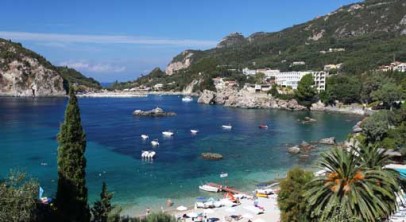Adriatic Discovery aboard Saga Sapphire

1 Dover, England
Dover, England
Dover is situated at the mouth of a valley in the chalk uplands that form the famous white cliffs. A pre-Roman settlement existed on the site and, as Dubris, the place was important for Roman traffic with the European mainland.
The town’s strategic position on the south coast has been evident throughout its history. Archaeological digs in the area have revealed that the area has always been a focus for people entering and leaving Britain.
Bombed and shelled during World War Two, the shattered seafront was subsequently redeveloped after the war and is now the foremost passenger port in the United Kingdom.
2 Lisbon, Portugal
Lisbon, Portugal
Set on seven hills on the banks of the River Tagus, Lisbon has been the inspiring capital of Portugal since the 13th century when the Moors were finally vanquished.
It is a city strewn with majestic architecture, old wooden trams, historic Moorish features and more than twenty centuries of history.
Following disastrous earthquakes in the 18th century, Lisbon was rebuilt by the Marques de Pombal who created an elegant city with wide boulevards and a great riverfront and square, Praça do Comércio.
3 Cartagena, Spain
Cartagena, Spain
A Mediterranean city and naval station located in the Region of Murcia, southeastern Spain, Cartagena has been the capital of the Spanish Navy’s Maritime Department of the Mediterranean since the arrival of the Spanish Bourbons in the eighteenth century.
As far back as the sixteenth century it was one of the most important naval ports in Spain, together with Ferrol in the North.
It is a walled town and has a fine harbour defended by forts. In the time of Philip II of Spain, it was a major naval seaport of Spain and is still the main military haven of the country.
4 Tunis, Tunisia
Tunis
Capital of Tunisia, the city of Tunis exudes a distinctly European atmosphere evident in the French colonial architecture, while its enthralling history and traditions come alive with visits to the colourful souks and markets, ancient remains and the vibrant medina, now a UNESCO World Heritage Site.
Nearby, the remains of the ancient city of Carthage reveal an incredible history that incorporates the rule of the Phoenicians and its status as the third largest city within the Roman Empire. Perhaps travel further afield to Dougga, the largest and most spectacular Roman site in Tunisia.
5 Valletta, Malta
Valletta, Malta
Malta’s capital city was built by the Knights of St John in 1565 and named after the French Grand Master of the Order, La Vallette. It is a great place to explore on foot as it’s full of historical sights and many shops, cafés and restaurants. St John’s Co-Cathedral is certainly worth a visit, its resplendent interior making it one of Malta’s most important treasures.
The city itself is a masterpiece of baroque architecture with narrow streets leading to pretty courtyards, and with fountains and statues dotted throughout, including Republic Square’s monument to Queen Victoria, an echo of British Imperial influence on the island. The Grand Harbour, one of the world’s deepest natural harbours, adds to Valletta’s charm and mystique.
Please note: The ship’s berth is at the bottom of a steep hill so you will need to walk uphill or take a taxi into the centre of Valletta. Current regulations prohibit tour vehicles from re-entering the port, which means you will be required to walk a maximum of 500 yards back to the ship.
6 Hvar, Croatia
Hvar, Croatia
The largest of the Croatian islands, Hvar is one of the treasures of the Adriatic.
Known for its art, excellent beaches and fields of scented lavender, it has been ruled in turn by the Romans, Byzantines, Venetians and the Austro-Hungarian Empire. The island has caves which show signs of prehistoric habitation, whilst weather records consistently show Hvar as one of the sunniest places in Europe.
The first public library ever built in the Dalmatian Islands was founded here in 1868 and the medieval town of Hvar is surrounded by 13th-century fortifications. There are also fine Gothic townhouses to be found in its narrow streets.
Please note: As Hvar is pedestrianised, there is a 500 yard walk from the tender port to the coaches.
7 Venice, Italy
Venice
Located on the north-western side of the Adriatic, you moor in the enchanting city of Venice, famed for its romantic gondolas, Renaissance palaces and baroque churches. The city itself lies on an archipelago in a shallow, crescent-shaped lagoon and features some 160 canals crossed by over 450 bridges.
Immerse yourself in the lively, bustling atmosphere and go in search of its outstanding churches including the elaborate Basilica di San Marco, the beautiful Campanile di San Marco which offers spectacular panoramic views across the city, and San Giovanni in Bragora where the composer Vivaldi was once the organist.
There is also a wonderful choice of museums and galleries, from Accademia, Venice’s greatest art gallery, to the Naval Museum which displays Italy’s best collection of maritime artifacts and memorabilia. Famous landmarks of this great city are innumerable, but perhaps the best known is St Mark’s Square and elegant Rialto Bridge.
8 Sibenik, Croatia
With a history tracing back to 1066, Sibenik was one of the few towns along the Dalmatian Coast to be founded by the Croats. The town has a rather chequered past, at various times occupied by the Venetians, Hungarians, Byzantines, Croats, Bosnians, the Ottoman Turks and Austro-Hungarians. The Italians briefly held control before the city became Yugoslav and then Croatin in 1990.
The cathedral, now restored to its former glory following an attack by the federal Yugoslav army in 1991, represents a stunning example of medieval architecture. The delightful old town with its flagged streets and mix of Gothic, Renaissance and baroque architecture remain virtually unscathed, a highlight being the Bunari interactive exhibition which tells the story of Sibenik’s long history.
9 Corfu, Greece
Corfu, Greece
Corfu is the most popular of the Ionian islands. A verdant oasis, it has four million olive trees, orange and lemon groves, striking architecture, wonderful coastal scenery and secluded beaches.
Reputedly the island where the Argonauts found refuge from the avenging Cholchic fleet after they had acquired the Golden Fleece, it is also said to be the Homeric island of Scheria where the Phaeacians, seafaring people, hospitably received Odysseus on his return from Troy. This fertile island is 36 miles long, 15 miles at its widest part, and covered in pine, cypress and fields of flowers.
Corfu Town, the capital, is one of the most beautiful and elegant in Greece, particularly the architecture in the medieval Old Town and the Jewish quarter, which reflects a flavour of Venice and Naples.
There are many sights of interest on the island including the beautiful Achilleion Palace and gardens that have an idyllic setting overlooking the sea; the 13th-century Byzantine Monastery of Virgin Mary; picturesque villages and secluded coves with beautiful sandy beaches lapped by the Ionian Sea.
The novelist and poet Lawrence Durrell lived on Corfu with his younger brother Gerald, the author and zoologist who acquired a menagerie of assorted wild animals.
10 Mahon, Minorca
Mahon, Minorca
Mahon (Mao) has been the capital of Minorca since 1721, probably due to its impressive natural harbour, which is among the largest in the World.
This, coupled with its location in the Mediterranean has made it a strategic stronghold for many nations throughout history. This has resulted in an abundance of historical buildings, the oldest being the Arch de San Roque which is all that remains of the wall that once encircled the town.
Minorca was occupied by the British during the 18th century and Lord Nelson is thought to have stayed on the island. Indeed, San Antoni mansion, located on the north side of the harbour, houses a collection of Nelson memorabilia.
The legacy of colonial rule can be seen in the more muted Georgian style of some of the buildings but Mahon still boasts attractive neo-Classical, Baroque and Romanesque buildings.
With narrow streets to explore, pleasant shady squares, enticing pavement cafés and shopping that ranges from a twice weekly market to expensive, designer boutiques, there is something for everyone to enjoy.
11 Gibraltar
Gibraltar
Tagged on to the end of Iberia, the intriguing British outpost of Gibraltar is dominated by a sandy peninsula and the stunning 1,400-feet-high limestone Rock. Although small, Gibraltar has always been seen as having great strategic importance on account of its advantageous position where the Atlantic meets the Mediterranean, just 12 miles from the coast of Africa.
Ever popular with British holidaymakers, Gibraltar is very much a home from home, boasting excellent duty-free shopping in many familiar British high street shops.
Please note: All coaches in Gibraltar are smaller 22-seat vehicles and are accompanied by a driver/guide. Due to new health and safety regulations scooters/wheelchairs and walking frames are not allowed on any of the vehicles under any circumstances.
12 La Coruña, Spain (for Santiago de Compostela)
La Coruna, Spain
The busy and proud port of La Coruña is perched on the north-western coast of Spain and is the capital city of the rugged and remote region of Galicia. Boasting a long maritime lineage, La Coruña is famous for being the departure point for Felipe II’s doomed Armada, which was defeated by the English in 1588.
It is also the final resting place of the British general, Sir John Moore. In keeping with its seafaring tradition, the port is also famous for the Torre de Hercules, Europe’s oldest functioning lighthouse.
The town itself is a pleasing mixture of handsome squares, impressive Romanesque churches and some of the most well-preserved 12th-century buildings in the region.
13 Southampton, England
Lying near the head of Southampton Water, a peninsula between the estuaries of the Rivers Test and Itchen, Southampton is Britain’s largest cruise port.
It has been one of England’s major ports since the Middle Ages, when it exported wool and hides from the hinterland and imported wine from Bordeaux. The city suffered heavy damage during World War Two and as a result the city centre has been extensively rebuilt.
 Titan Travel have a reputation for innovative and enthralling escorted holiday itineraries, and through the guidance of their founding principles, “quality, service and value” which have remained unchanged since the 1970′s, their expertise and experience are second to none.
Titan Travel have a reputation for innovative and enthralling escorted holiday itineraries, and through the guidance of their founding principles, “quality, service and value” which have remained unchanged since the 1970′s, their expertise and experience are second to none.
Titan Travel strive to ensure that aspect of their holidays whispers quality, before you fly, you get to appreciate a comfortable, chauffeur-driven transfer from your front door to the airport with our peerless VIP Home Departure Service, check-in assistance and complimentary porterage. All international flights are with world-renowned scheduled airlines and cruises with acclaimed operators. Touring holidays are expertly designed by the product team to present a comprehensive, imaginative introduction to the destination of choice yet still offer plenty of time for relaxation. The services of a tour manager or cruise manager are included throughout. When you return to the UK, you are met in the arrivals hall of the airport and shown to your VIP Home Departure Service vehicle, waiting to return you to your front door.
Our Opinion
“Titan Travel’s guiding principles of customer service, quality of product and value for money are undoubtedly a contributing factor to them being voted, on many occasions, the UK’s best tour operator.”

